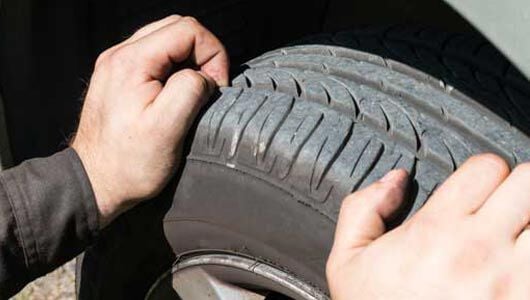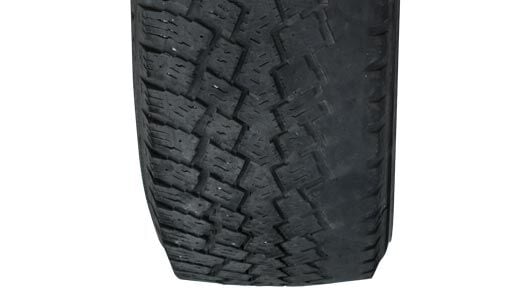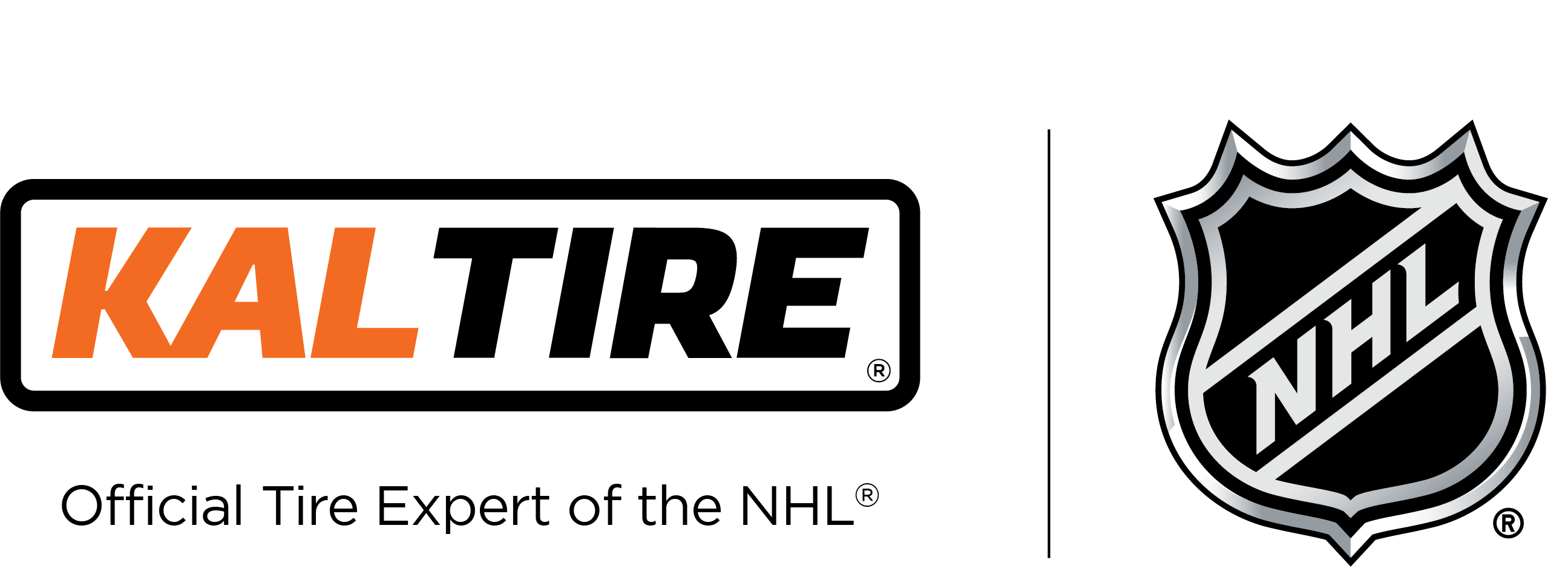How do you measure tire tread depth?
Are you wondering how much life your tires have left? Learning how to check tread depth is the best way to tell if your tires are safe for another season or if they’re almost ready to retire.
Tires that don’t have enough tread depth put you at greater risk of hydroplaning, punctures and reduced traction. Fortunately, measuring tread depth regularly is a simple way to help ensure your tires can perform safely. Here are 3 simple ways to check your tire tread wear.
1. How to check tire tread depth with a Canadian quarter
- Slip a quarter in between your tread blocks.
- With the caribou’s nose down (facing you), does the tread covers the caribou nose? If so, your tires may have adequate tread left (they might even be new!).
- If you can see the nose of the Caribou, your tires are worn and will need to be replaced (soon, if not right now).
2. How to check tread depth with a tire tread depth gauge
Tire tread depth gauges are a fast and easy way to determine with certainty if your tires are still safe for use or if they need to be replaced. Tire tread depth gauges are available at many gas stations, and some drivers like to keep one in the glove compartment for easy access.
- Find the shallowest groove of the tread and insert the pin of the gauge until the base is flush with the tire.
- Read the gauge and compare to the tire tread scale below to learn what you should do.
Tread depth what to do
- 6/32” Your tire’s tread depth is sufficient for 3-seasons but nearing minimum for a winter tire.
- 5/32” If wet roads are a concern, consider replacing your tires. Transport Canada advises against any tread depth below 5/32” on snow-covered roads.
- 4/32” – 3/32” Seriously consider replacing your tires as soon as possible.
- 2/32” Your tires are legally bald and need to be replaced.
According to most manufacturers, and even the law in most provinces, your tires should be replaced when the tread depth reaches 4/32” in the winter and 2/32″ in the summer. If your tread depth wears to those levels, your tires are considered bald and a safety hazard.
3. How to check tread depth with tire tread wear bars or indicators
Some tires have built-in tread wear indicators. The most common indicators are wear bars that have been moulded into the grooves of the tire tread to mark the minimum allowable tread depth. Some manufacturers also will etch tire wear numbers on the tire – these numbers fade as the tires are worn past their etched depth. Either way, If these indicators are worn, replace your tires right away.

Why you need tires with sufficient tread depth
Tires at or above the recommended tread depth level can give you better traction, reduced risk of punctures and the ability to push away water to help you avoid hydroplaning on wet roads.
While you’re checking tread depth on your tires, be sure to also check your tire pressure and look for signs of unusual wear as well as signs of damage and aging, such as cracks, bulges or abrasions.






